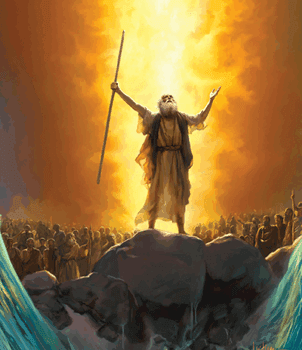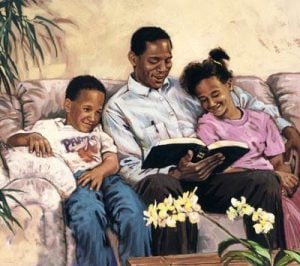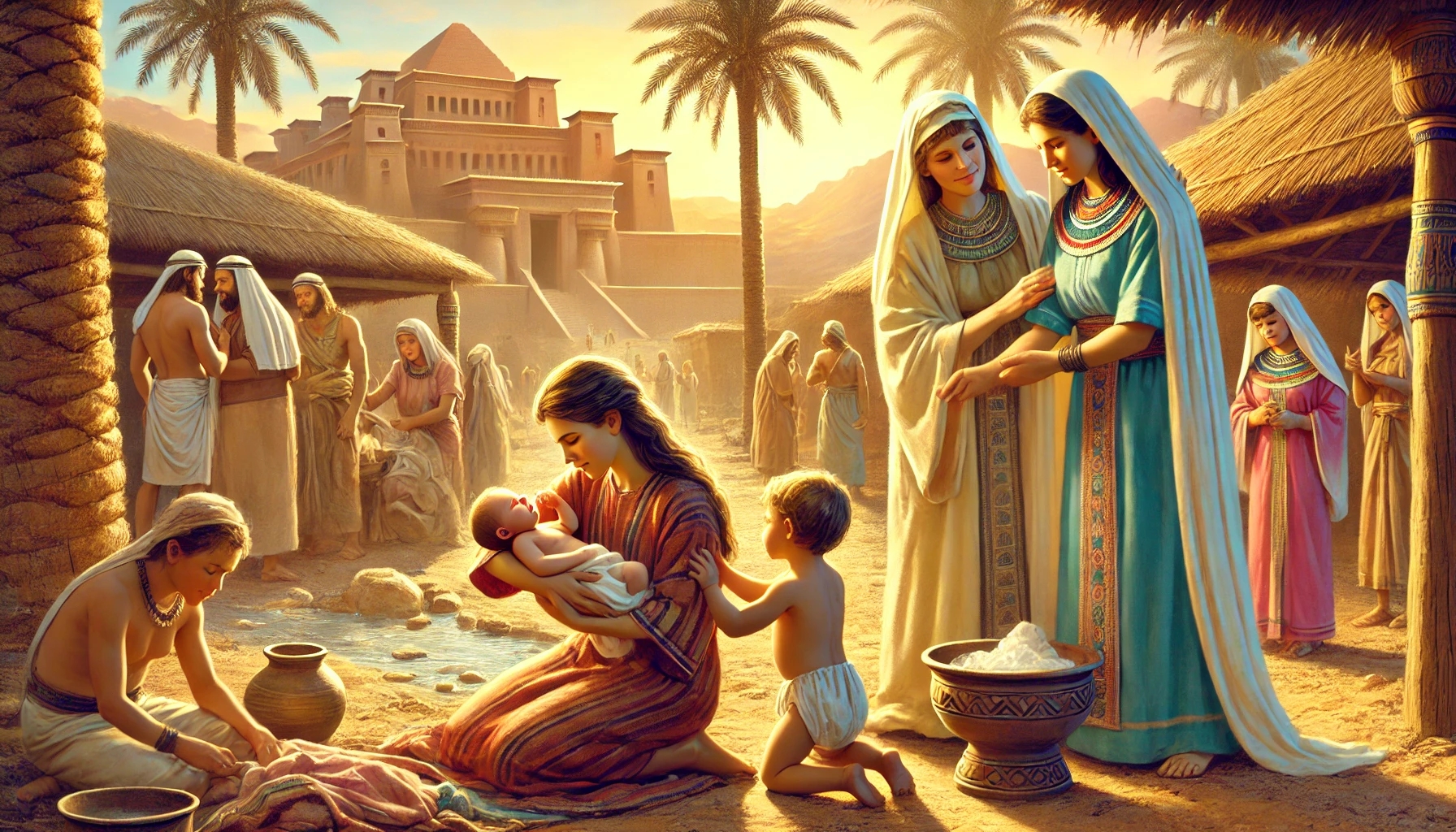AWR focuses on hard-to-reach places. With new calls coming from undisclosed areas, this digital-to-discipleship model is changing lives. Get involved at awr.org. Watch the full report here: https://www.youtube.com/watch?v=QAaPGZVPlgk&t=1s #AWR360 #BroadcastToBaptism Source: https://www.youtube.com/shorts/6I-Vwm4g9nc
Wednesday: Moses Is Born
Daily Lesson for Wednesday 2nd of July 2025
Read Exodus 2:1-10. What role did God’s providence and protection play in Moses’ birth story?
The historical background of Moses’ birth and life is thrilling because he lived during the time of the famous Egyptian eighteenth dynasty. One king during this dynasty—Thutmose III, called the “Napoleon of Egypt”—is considered one of the most famous pharaohs of ancient Egypt.
Though under a death sentence at birth (see Exodus 1:22), Moses was born as a “special” son (NLT; Hebrew tob, lit. “good”; Exodus 2:2). The Hebrew term describes more than external beauty. This word is used, for example, in characterizing God’s work during Creation week, when He declared everything was “good,” even “very good” (Genesis 1:4,10,31).
As a new creation, this “good” child will, according to God’s plan, become the adult who will lead the Hebrews out of their bondage. At this baby’s birth, especially under such dire circumstances, who could have envisioned his future? Nevertheless, God will fulfill His words to Abraham, Isaac, and Jacob. He covenanted with them that He would give their descendants the Promised Land (Exodus 2:24-25). And, yes, He would use this tob infant, decades later, to do just that.
Until then, the Egyptian princess Hatshepsut adopted Moses as her son. The name given to Moses has an Egyptian origin, meaning “son of” or “born of,” as reflected in the names of Ah-mose (“son of Akh”) or Thut-mose (“son of Thoth”). His name is, thus, rendered in Hebrew as Mosheh, namely “drawn out.” His life was miraculously spared when he was “drawn out” of the river.
We know only a few things about his early life. After being miraculously saved and adopted by Hatshepsut, Moses lived for his first 12 years with his original family (Exodus 2:7-9; Ellen G. White, Patriarchs and Prophets, p. 244). Moses then received the best Egyptian education, all in order to prepare him to be the next pharaoh of Egypt (Patriarchs and Prophets, p. 245). How fascinating that, ultimately, so much of this education would be useless for, or even work against, what really mattered: the knowledge of God and of His truth.
|
How much are you learning that is ultimately useless for what really matters? |
 (1)
(1)Rebecca Luca 24 15 – Apri la porta del tuo cuore
“Gesù stesso si avvicinò e cominciò a camminare con loro”. 📖 Luca 24:15
—
💌 Apri la porta del tuo cuore
🗣 Speaker: Rebecca Sandu Source: https://www.youtube.com/watch?v=YXFkA1Niy_E
AdventInnovate: The Jungle School

Jasper Iturriaga built a school in the Philippine jungle, funded entirely through social media. He was moved to act after witnessing the long, risky journeys local children made to attend distant schools. In response, over $20,000 was crowd-funded to build classrooms, hire teachers, and provide housing. To meet the community’s needs, the school uses a […] Source: https://atoday.org/adventinnovate-the-jungle-school/
Rebecca Luca 24 15 Orizzontale
“Gesù stesso si avvicinò e cominciò a camminare con loro”. 📖 Luca 24:15
—
💌 Apri la porta del tuo cuore
🗣 Speaker: Rebecca Sandu Source: https://www.youtube.com/watch?v=YXFkA1Niy_E
1: Oppression: The Background and the Birth of Moses -Teaching Plan
Key Thought: God takes the initiative to deliver those who trust in Him. He sent Moses to help in redemption, deliverance, and final salvation..
July 5, 2025
1. Have a volunteer read Exodus 1:1-11.
- Ask class members to share a short thought on what the most important point is in this passage.

- What crucial truth is found here? What is the situation of the Israelites at the time of the exodus?
- Personal Application: How do you feel when people overlook, hurt, exploit, or abuse you, either mentally, physically, or emotionally? Share your thoughts.
- Case Study: One of your relatives states, “Why did God allow Israel to live in Egypt so long to be oppressed? Why did it take so long to intervene?” How would you respond to your relative? .
2. Have a volunteer read Exodus 1:9-21.
- Ask class members to share a thought on what the most important point in this text is.
- What key role did the faithful midwives play and why are they remembered in history?
- Personal Application: Even in the face of a king’s command the midwives did the right thing. What is the message here for us? Share your thoughts.
- Case Study: One of your friends states, “What would have happened if Moses parents and Miriam had lacked the courage and truth to hide Moses in the river? What would have happened to God’s plan?” How would you respond to your friend?
3. Have a volunteer read Exodus 2:1-10.
- Ask class members to share a short thought on what the most important point in this text is.
- What role did God’s providence and protection play in Moses birth story?
- Personal Application: How much are you learning or have learned that is ultimately useless for what really matters? Share your thoughts.
- Case Study: One of your neighbors states: “Was Moses’ training to be leader in Egypt helpful in his future leading of the Israelites, or was it mostly useless?” How would you respond to your neighbor?
4. Have a volunteer read Exodus 2:11-25
- Ask class members to share a thought on what the most important point in this text is.
- What events happened to change the direction of Moses’ life? What can we learn from this?
- Personal Application: Was it part of God’s plan for Moses to kill the Egyptian? If not, what does this tell us about how God can overrule and situation and use it for His own purposes? Share your thoughts.
- Case Study: Think of one person who needs to hear a message from this week’s lesson. Tell the class what you plan to do this week to share with them.
(Truth that is not lived, that is not imparted, loses its life-giving power, its healing virtue. Its blessings can be retained only as it is shared. ”Ministry of Healing, p. 148).
 (0)
(0)Source: https://ssnet.org/blog/1-opression-the-background-and-the-birth-of-moses-teaching-plan/
BC Camp Meeting 2025 “Tell It Again” Promo (vo version)
BC Camp Meeting 2025 Promo (text version)
A Challenge to Explore Exodus
Dear Sabbath School Net Family,
Maurice and I have presented these challenges before – encouraging everyone to read through the entire book we are studying in the Sabbath School quarterly. With this quarter’s lesson on Exodus, I encourage everyone to read the whole book of Exodus. Many of us have read it before, but there are different ways to approach it that may help you gain fresh insights and new perspectives. For example, you may want to read a different translation than the one you are accustomed to using. After all, every translation has its strengths and weaknesses, including the KJV.
Another idea is to look for different themes in Exodus. For example, the most obvious is the Gospel and plan of salvation that we find throughout the book. In Exodus 12, we see the shadow of the cross. Now, I am not going to tell you where else we find the Gospel in the book of Exodus; I am going to let you read it for yourself.
Okay, I will give you one more example. In Exodus 15 the children of Israel find an oasis of water, but it tastes bitter. Moses is instructed to place a tree in the water, and suddenly it becomes sweet. Could the tree possibly represent the cross that takes the bitterness out of our lives and makes our lives sweet?
Another theme I would like to suggest watching for as you study Exodus is the theme of discipleship. Moses was a disciple of the Lord. In Exodus 18, Moses learns from his father-in-law about how to make more disciples instead of trying to do everything himself. In Matthew 28 Jesus taught His disciples to make more disciples. In Exodus 32 Aaron gives us a good example of how not to disciple. Aaron and the golden calf give us an example of how the most popular leader is not necessarily the best leader. Speaking of Exodus 32 I just thought of another glimpse of the Gospel that Moses gives us. But I have given away too much already. I will let you discover that one for yourself.
Enjoy reading and studying, my friends! Be sure and share what you discover in comments below or under various lessons.
 (0)
(0)Source: https://ssnet.org/blog/a-challenge-to-explore-exodus/
Lesson 1.Oppression: The Background and the Birth of Moses | 1.3 The Hebrew Midwives | EXODUS | LIVING FAITH
- « Previous Page
- 1
- …
- 149
- 150
- 151
- 152
- 153
- …
- 4665
- Next Page »




 Lesson 1: Oppression – The Background and the Birth of Moses
Lesson 1: Oppression – The Background and the Birth of Moses 1.3 The Hebrew Midwives
1.3 The Hebrew Midwives Courage for the Truth: Faithful Women Against the King’s Command
Courage for the Truth: Faithful Women Against the King’s Command Introduction
Introduction Bible Study: Exodus 1:9–21
Bible Study: Exodus 1:9–21 Question 1: Read Exodus 1:9–21. What key role did the faithful midwives play, and why are they remembered in biblical history?
Question 1: Read Exodus 1:9–21. What key role did the faithful midwives play, and why are they remembered in biblical history? Application for Daily Life
Application for Daily Life Conclusion
Conclusion Thought of the Day
Thought of the Day Illustration – “Miriam’s Decision”
Illustration – “Miriam’s Decision”